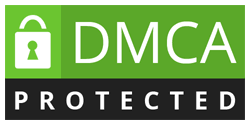Summary: Learning how to structure a pediatric nursing assignment like a pro is a must-have skill among nursing students who would like to excel. The guide will include the basics, approach, popular topics, and professional tips. Get to know how to use clinical reasoning, nursing care plans, APA, and case study formats to make a perfect assignment.
Nursing assignments in paediatrics need more than knowledge; they need a professional structure to communicate your knowledge. Provided that you want to impress the professors and enhance your grades, the trick is to learn how to structure a pediatric nursing assignment like a pro. This guide divides everything you need to know about nursing academic writing into small chunks, whether you are just starting or want to perfect the skill. In addition to this, you can avail nursing assignment help in case you ever get stuck.
Let our subject specialists help you write your dissertation as per your requirements at significantly affordable prices!


It's fast and risk-free
Understanding the Basics of Pediatric Nursing Assignments
The sole goal of paediatric nursing assignments is to care for infants, youngsters, and adolescents. Such assignments demand a combination of a level of expertise in clinical knowledge and the ability to write scholarly papers in their exploration of aspects like growth and development, common childhood illnesses and family-centred nursing.
Some of the points are as follows:
- Arranging your actions using a nursing care plan for children.
- Emphasis on developmental stages and how these affect nursing decisions.
- Demonstrating your ability to apply theory in practical, clinical contexts.
Assignments may ask you to write reports, case studies, or reflective essays, but they all share a need for clear structure and evidence-based content.
Step-by-Step Guide to Structuring Your Assignment
An effective assignment structure for nursing students aids in structuring your thoughts and provides a rational structure in the flow of information. Here is a detailed plan that you can adhere to:
1. Title Page
Include your assignment title, your name, course details, and submission date.
2. Introduction
Give a quick summary of your subject and outline your objectives or research queries. This sets the tone and context.
3. Case Description (if applicable)
Provide background information on the pediatric patient or situation, using a clear pediatric case study format if relevant.
4. Nursing Assessment
Provide a summary of the findings from the physical exam and medical history. Pay attention to the developmentally appropriate assessments.
5. Nursing Diagnosis
Employ credible nursing terms and definitions such as NANDA. This part reveals your medical decision-making.
6. Care Plan and Interventions
Detail your planned nursing actions based on assessment and diagnosis. Incorporate evidence-based practice to justify your choices.
7. Evaluation
Explain how you will measure the success of your interventions and any follow-up plans.
8. Conclusion
Summarise the main points and discuss their significance to nursing practice.
9. References
Cite your research using the APA format.
You will never fine prices as low as ours elsewhere! grab the opportunity to get unimaginable discounts now!

It's fast and risk-free
How to Format a Nursing Assignment
Presentation matters. A formatted paper is more convenient to read, and it is professional. These are the key formatting tips:
- Double-spacing and Times New Roman font size 12 are used.
- Keep a margin of 1 inch around.
- It is good to have clear sections or subsections using headings and subheadings.
- Add page numbers.
- Where necessary, use tables or bullets.
The format makes your paper clean and follows the academic standards, making the paper easy to follow.
Common Topics in Pediatric Nursing Assignments
The field of pediatric nursing is very broad. These are some of the generic assignment topics:
- Creation of a nursing care plan for children who have some chronic diseases, such as asthma or diabetes.
- Managing acute pediatric conditions such as infections or injuries.
- Dealing with children’s and teenagers’ mental health concerns.
- Exploring family dynamics and their impact on child health.
- Preventing childhood diseases through immunisations and health education.
- Legal and ethical considerations in pediatric nursing care.
- The role of professional nursing documentation in tracking pediatric assessments, interventions, and outcomes.
Understanding these topics will help you anticipate the kind of information and structure you need.
Incorporating Case Studies and Clinical Scenarios
Pediatric nursing assignments require case studies and clinical situation analysis, and explanation. They:
- Give practical examples of your theory.
- Assist you in the application of clinical reasoning in nursing assignments where problems involving patients are analysed so that care can be planned.
- Demonstrate your problem-solving and analytical skills.
When including case studies, structure them.
- Present patient history and symptoms.
- Discuss assessment findings.
- State nursing diagnoses.
- Outline interventions and expected outcomes.
This method not only strengthens your argument but also demonstrates your grasp of clinical practice.
Never Miss Your Deadlines! We work on your projects diligently and deliver it under the agreed upon timeframe, so you will always meet your deadlines without any delays.

It's fast and risk-free
Tips to Write Pediatric Nursing Assignments Professionally
Being a professional nurse writer is not only about spelling and grammatically correct writing. When you follow some basic nursing academic writing tips, you will make your text well-groomed, authoritative, and effective. These are some of the strategies that should be remembered:
- Be succinct or rather to the point, as far as delivering your message goes.
- Speak in objective, clinical terms, taking care to avoid jargon.
- Back up all claims with current, peer-reviewed evidence.
- Reflect on your own clinical experiences, if applicable, to add depth.
- Ensure your paper flows logically with smooth transitions.
- Before submitting, make sure you thoroughly correct and proofread what you’ve written.
Professional writing shows respect for your readers and helps communicate your expertise.
Importance of Evidence-Based Practice in Pediatric Assignments
The application of evidence-based practice implies the incorporation of the most relevant current research, as well as clinical knowledge and patient preferences. This approach:
- It enhances your nursing diagnosis in paediatrics by making it scientific.
- Proves that your nursing care plan for children is grounded in effective interventions.
- Improves patient outcomes by promoting effective, safe care.
Make sure your assignment includes citations from trusted sources like journal articles, textbooks, and clinical guidelines.
Using APA Style in Nursing Papers
The best format for educational nursing writings is APA. To nail it:
- Use in-text citations whenever you refer to ideas, data, or direct quotes.
- Include a comprehensive reference list at the end, alphabetised by author.
- Format headings, tables, and figures according to APA rules.
- Avoid plagiarism by crediting all sources properly.
Following APA style ensures your work is credible and professional, key to strong academic performance.
Aligning Structure with Academic Goals
An excellent pediatric nursing task goes beyond the presentation of facts; it shows your critical thinking and knowledge application skills. Remember these:-
- Nurse students will want to use your assignment outline as the guide; however, it of course has to be adapted to the requirements of the assignment.
- Use bullet points or tables to present complex data, making your paper more reader-friendly.
- Connect your sections logically so each builds on the last.
- End with conclusions that highlight practical implications and future directions.
Keep in mind that your findings pop out when they are structured and concise.
Final Thoughts
Learning how to structure a pediatric nursing assignment like a pro will make you successful in the future in terms of academic as well as clinical performance. By following basic pediatric concepts, creating a strict outline, using case studies and writing professionally using APA format will make your professors admire you and expand your clinical knowledge.
You should be critical and have clinical reasoning over your assignments. As you practice and learn with commitment, you will acquire the competencies required to prepare nursing assignments in the nursing of children that mirror your competence and enthusiasm to work in the area of child health.



